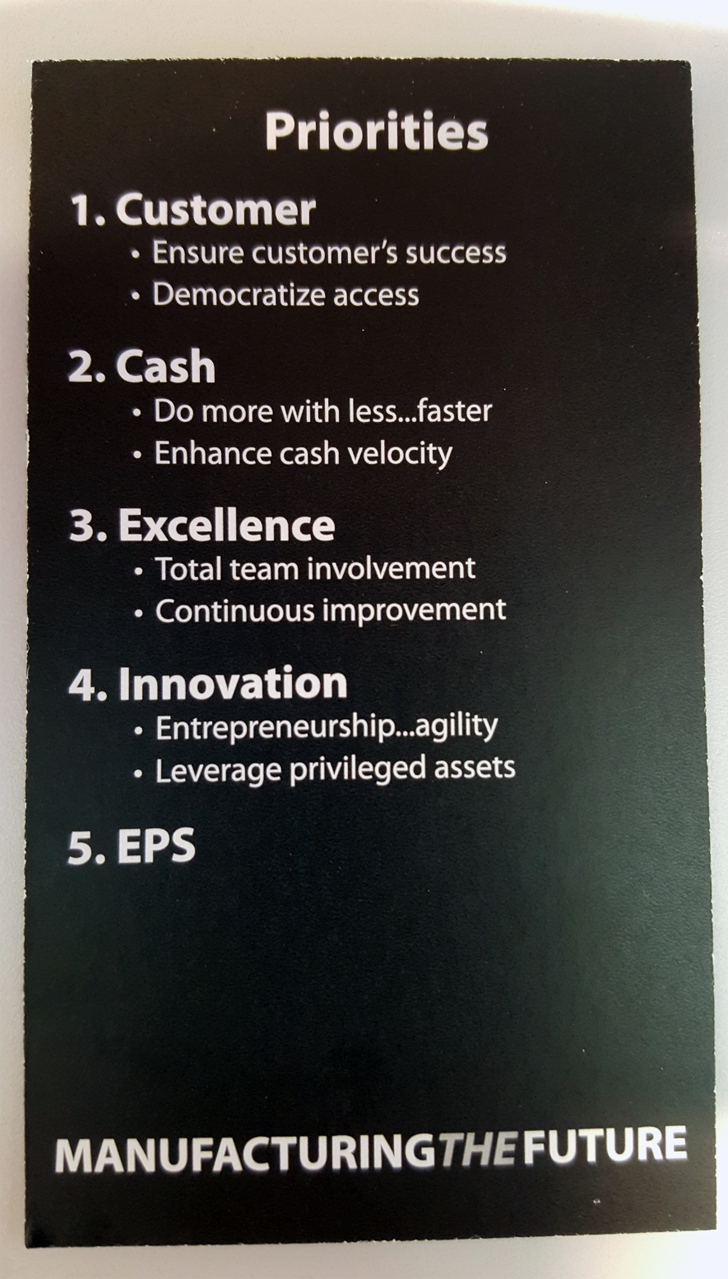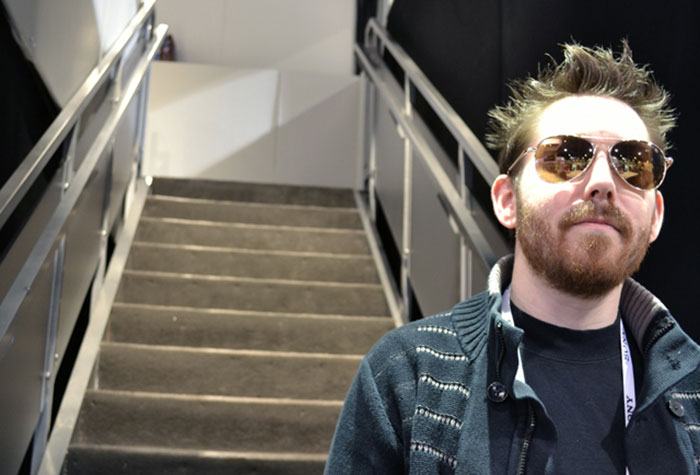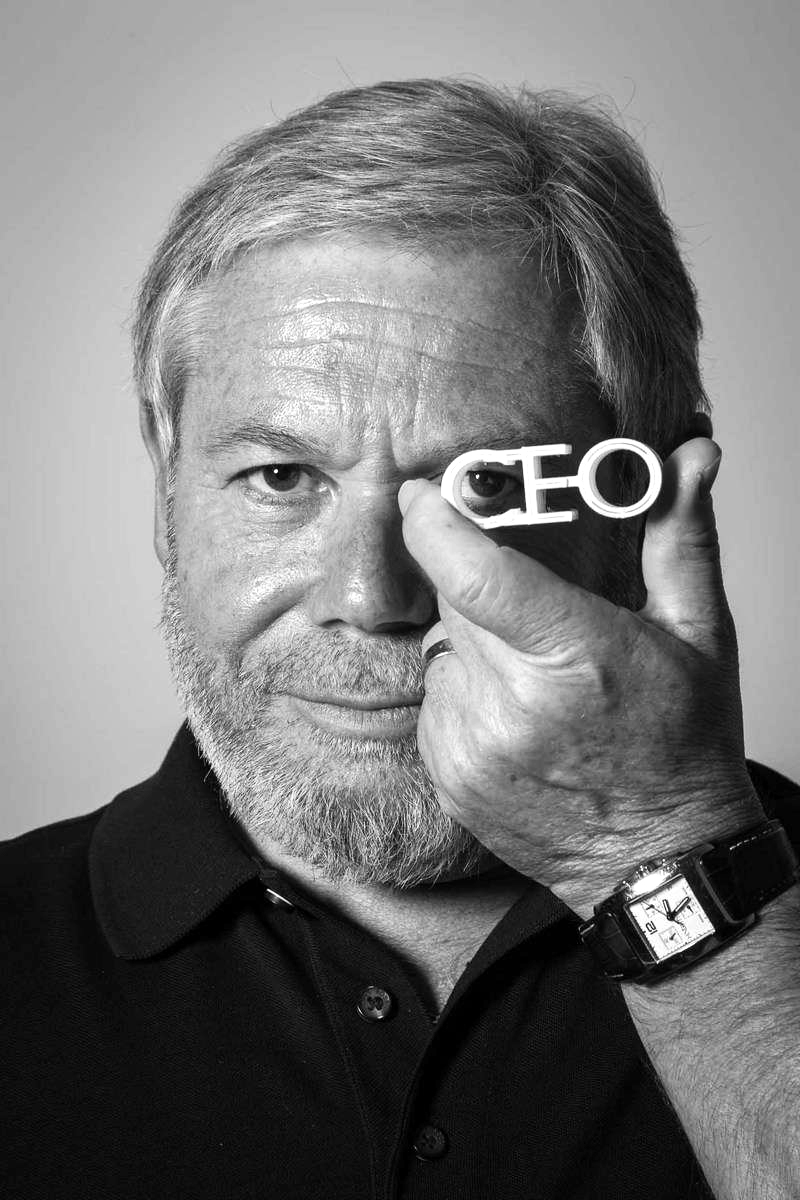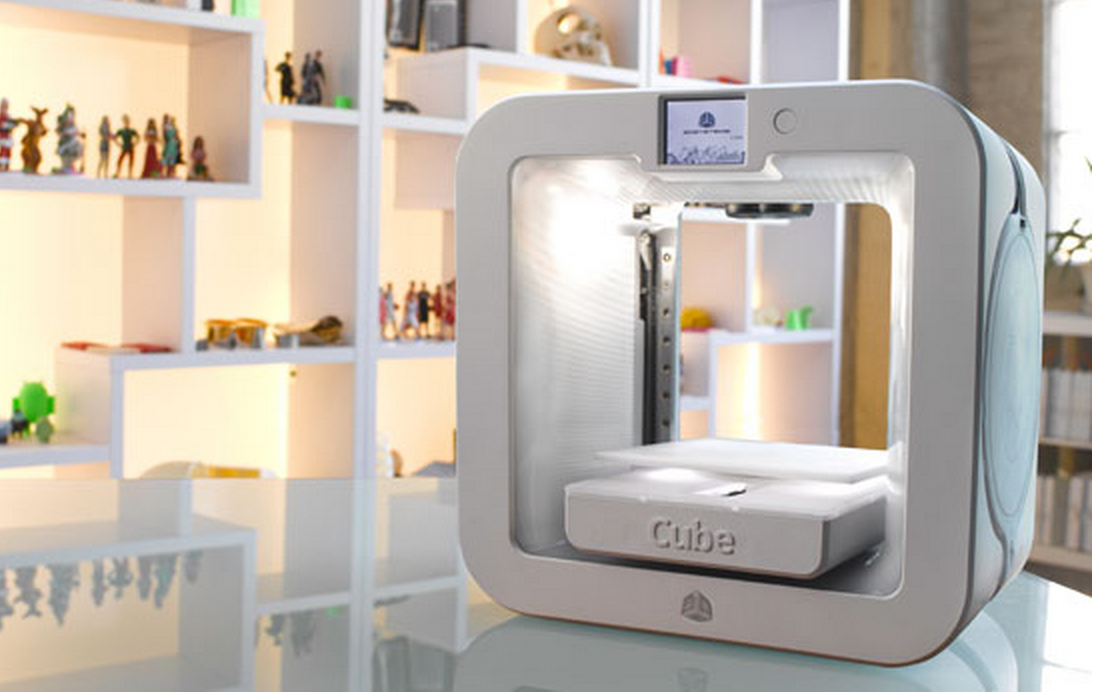Part of an ongoing series on how the 3D printing hype bubble has affected the lives of the individuals involved. To read the first story in this series, head here.
In a previous article on the story of former CEO Avi Reichental and his tenure at 3D Systems, I included information from an anonymous source that the Cubify group, devoted to 3D printed consumer goods and the Cube 3D printer, was let go as part of a downsizing operation. While that source told me that the entire Cubify group was fired, marched out of headquarters and unable to return to their desks for their belongings, I have since heard from a mid-level employee that that is not exactly true.
They tell me that a small number of employees from the marketing team at Cubify were let go, but that the entire group wasn’t dissolved or “marched out”. They also mention a rumor that the San Francisco and New York City Cubify offices would be shut down as well. The individual suggests that the company is shifting its focus away from consumer goods and towards professional, production, and prosumer products. While there will be some attention placed on consumer goods, they suggest that this line did not bring in much revenue for 3D Systems. This individual says that the R&D group for the Cube was shut down completely last week. And, thankfully, the engineers working on the Cube haven’t been let go, but were just reassigned to other product families.
Cubify and the Cube, the source says, were pet projects of former CEO Avi Reichental, saying that roughly 75% or more of the company’s resources – including everything from marketing to engineering to R&D – were devoted to the Cube, while the other five technologies – SLA, DMP, SLS, MJP, and CJP, were left with the rest. As for rumors that the ceramics and culinary would also be shelved, the source says that they may be less of a priority as well, with the focus being on improving the customer experience that Reichental let fall by the wayside. My original (separate) source on the Andover facility shut down has since told me that the ceramics 3D printing division (created through the acquisition of Figulo in 2013) closed up shop before the New Year.
Reinforcing the source’s story, 3D Systems announced at the end of 2015 that they would be consolidating their consumer division, discontinuing the $999 Cube®, while continuing to work on the CubePro® 3D printer for prosumers. The Cubify.com domain will be closed on January 31, 2016, with the consumer products discontinued as well. Support for Cube customers will continue through a new e-commerce platform on the primary 3dsystems.com domain. The press release states that 3D Systems will focus on manufacturing applications and new systems that will bring about greater returns on investments and earnings, saying that “management expects revenue to be impacted by less than 2% and profitability to improve” and that “management expects to record a charge in the fourth quarter in the range of approximately $19 million to $25 million related primarily to inventory write downs and related purchase commitments.”
Andy Johnson, Interim-Chief Executive Officer & Chief Legal Officer at 3D Systems, commented, “In connection with our ongoing review of our business and industry, we believe that the most meaningful opportunities today are in professional and industrial settings, from the product design shop to the operating room to the factory floor. We are focusing our efforts on enabling professionals and companies to improve their designs, transform their workflows, bring innovative products to market and drive new business models.”

This latest source suggests that the company can still recover from the issues that it’s faced in the past, saying that things had already become better in the two weeks after Reichental stepped down. They suggest that the former CEO was overly concerned with the “next big thing”, something that others have told me as well, but that he didn’t allow for any innovation. As a result, employees were reactive to the CEOs whims, as he came up with arbitrary price points for products, pushing the team to reduce the costs of machines, before he moved onto a new product without much (if any) market research, focus groups, or cost analysis. And this would all occur with timelines that no one would be capable of working under, as Reichental threw out a last-minute suggestion for a feature that they’d need to create. Engineers would not want to put out shoddy products, but the CEO would demand them, leading to delays, that would lead to job loss, which would lead to further delays, etc.
The source corroborates the Glassdoor stories regarding wages and work environment at 3D Systems, saying that compensation was good for VPs and up and that there were stock options for management, bonuses for salary employees, and no bonuses for hourly employees. In 2015, this individual says that they believe that there were only minimal raises in 2015, regardless of performance, but that many (not all) VPs and higher all received stock bonuses and/or raises.
As for the startling Glassdoor reviews regarding the toxic work culture, the source says that many employees felt the need to walk on eggshells daily when one of the “40” VPs were around and that upper management was extremely political. They go on to say that the former CEO and his children ruled with an iron fist, with blame starting at the top and working downwards so that departments were fighting against one another. They say that no one they knew had ever said anything positive about the former CEO or his children. Adam Reichental is described as a mostly friendly person, but, on the off chance he was seen in an office, he was likely to be playing League of Legends, using reddit, disruptively socializing, or flirting with female staff. Alyssa Reichental is said to have spent her time as Director of Social Media removing negative posts about 3D Systems on social media before being fast-tracked to Director of Consumer Marketing without the necessary experience and, as a result, saw a number of people quit or fired.

According to the source, Reichental actually did fire people at the top, including VPs, directors, and mid to upper management, at the beginning of 2015, but the source believes that some of those same people potentially could have actually helped the company recover. In this individual’s mind, these people were fired so that the former CEO could look as though he was holding employees accountable, while he was able to get rid of those perceived to be against him. The source even says that, at the beginning of the year, Reichental mocked Stratasys for their layoffs during the same week that he ended up letting staff go. Because some of them were in favor of putting quality into all 3D Systems products, according to the source, it was suspicious that they were dismissed. This was likely in response to poor quarterly results.
The source also corroborated that the sweeping number of acquisitions that took place during Reichental’s tenure caused issues within 3D Systems, saying that the former CEO was just buying market share and not reinvesting in the company’s own innovative programs. An integration strategy, they say, was nonexistent, and the addition of swaths of new VPs with each acquisition made for an overabundant number of department heads. On top of that, the source adds, Reichental needed to personally sign off on every decision, with important job positions taking six or more months to fill.
Despite loving the actual work they were performing, the source dreaded coming to work because there would be some curve ball thrown from upper management. Working 50-70 hours a week, it was difficult to make friends with coworkers and seeing family was the only thing desired at the end of a work day. But, below upper management, including many managers and directors, many of the people were great, according to the source, and employees actually liked one another.
In response to our previous article on Reichental, Ron Hollis, co-founder of the 3D Systems-acquired Quickparts, argued that, though it is easy to demonize a CEO after they leave, Reichental should be appreciated for the things that he accomplished while in charge of 3D Systems. Hollis writes:
He took over a destitute company (3D Systems) that was on the brink of bankruptcy. They had not invested in R&D for years, continued to erode their customer base with poor customer service,operated in a tiny market (3D print was way less than $1B), and had formidable competition from Stratasys, eventually Objet because of Stratasys, DSM Somos,etc.
– He moved the headquarters across the country to get out of California and into a more reasonable environment to operate. This move was super high risk.
(I would contend that recruitment to Rock Hill, SC, has become a bit difficult, as Charlotte isn’t exactly a hotbed for qualified businesspeople (except bankers), Engineers, or manufacturing employees)– He built a nice HQ that was cutting edge and represented the vision that he had for the company (technology leader).
(Yes, a nice HQ that he built right next to a sewage treatment facility. Let me tell you, it makes for excellent first impressions when you have someone flown from around the globe, to be met with the smell of raw sewage first thing in the morning.)– He started the roll-up of the service bureaus so 3DS could be a leader in the parts business.
This was the most difficult decision as the CEO since it was a “burning the bridges” decision for the company. This decision would never be made by many CEO’s in the same situation (even some that told me they would never compete with their customer but are doing it now). It took courage and leadership to make the decision.
Hollis goes on to explain why he believes that these were important decisions on Reichental’s part, saying that service bureaus had no reason to buy new equipment because companies like 3D Systems and others were not innovating and creating new systems. In turn, those bureaus may have provided worse quality services. “By rolling up the market,” Hollis says, “then [3D Systems] would be able to eliminate archaic systems, introduce the end user to the latest technologies; and most importantly, build a relationship with the folks that actually benefited from the power of (the end user). Theoretically, it was genius. However, as theory seldom converts into reality, other forces came into being causing change in purpose.”
He adds that the acquisition spree that occurred during this “roll up”, benefited the entire industry through the investment money poured into the stock market, including the IPOs of ExOne, voxeljet, and Materialise, as well as the merger of Stratasys and Objet. However, Hollis limits his comments to Reichental’s actions between 2003 and 2010. After the massive hype that occurred, which he ties directly to sites like 3DPI, he believes that good strategy was “was abandoned for more near time opportunities, mostly immediate reward from the public markets for activity without regard for maximizing value from assets as they were acquired.”
While Hollis may champion the efforts of Reichental, it might be argued that the headquarters’ location in South Carolina would not be the best place for recruitment, given the area’s lack of reputation for engineers, though there might be bankers in the Charlotte region just a short commute away. The headquarters is also located adjacent to a sewage treatment facility that could, regardless of how nice the building is itself, have a negative effect on any important person visiting the 3D Systems HQ.

Now that the former CEO is gone, the source believes that 3D Systems is taking painful steps towards recovery and even suggests that Reichental’s closest allies have more or less changed their attitudes. The source disagrees with the fact that the Andover facility, housing the ZCorp team, was closed, but sees any closing of the New York and San Francisco offices as a good thing. And, though seeing friends and coworkers leave will be heartbreaking, the consolidation of products and offices under a single vision will benefit the company, this individual believes.
When I asked for ways that 3D Systems could turn things around, the source suggested that the company should reassess its overcompensation of VPs, as a means of demonstrating to lower level staff that the firm actually cares about them. They say that 3D Systems should focus on its existing talent, over trying to create new markets the way that Reichental did, and that quality should be placed as a priority above all else. Finally, the source believes that the company should empower employees at all levels, investing in them, their environments, and their quality of life. This includes trusting management to make the decisions they should be trusted to make and acknowledging the hard work that even entry-level employees are performing, as they sacrifice their family lives to make the company great.
It’s difficult to know if the company will turn around as a result of Reichental leaving, but, from the sound of the Glassdoor reviews and source input, it would be hard not to see at least some improvement, given the hostile work environment it sounds as though he created. I will, hopefully, be speaking to Interim-CEO Andrew Johnson in the near future about the direction the company is headed in and will, if all goes well, gain some insight into how 3D Systems will fare. Regardless of what he says, it’s hard for me not to agree with this most recent source that empowering and investing in employees is a key component of a business’s success.






Leave A Comment